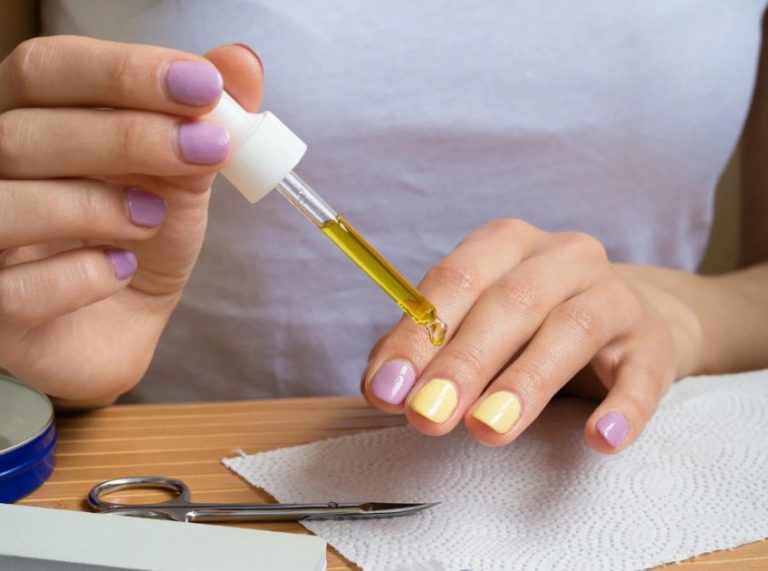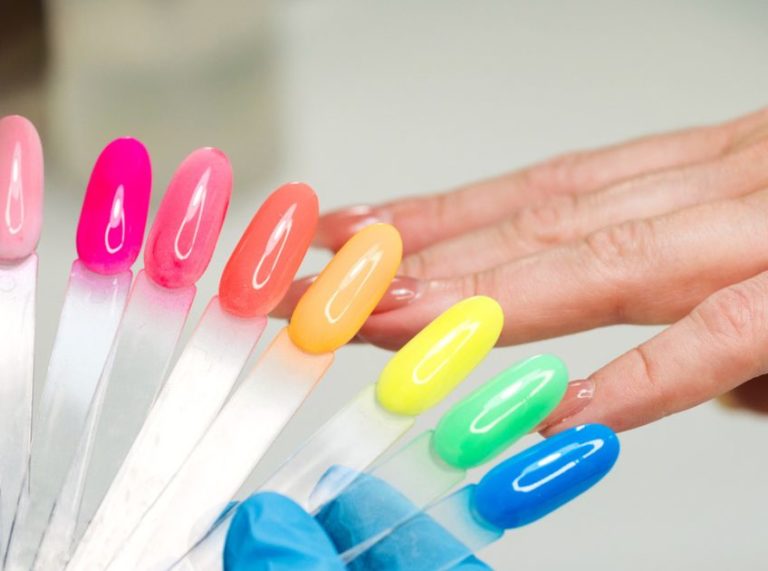
Important: This article is for informational purposes only. Please read our full disclaimer for more details.
Your nails aren’t just there for aesthetics—they’re silent indicators of your internal health. From changes in color to unexpected texture shifts, your nails can reflect vitamin deficiencies, circulatory issues, or even chronic diseases. Knowing what to look for can help you catch early signs of health concerns before they become serious.
Texture Troubles: What Your Nails’ Surface Reveals
Nail texture changes are among the most common signs that something is going on beneath the surface. These changes can range from brittleness and peeling to ridges and pits, and each has its own story.
Nail Texture Table: What the Surface of Your Nails Might Be Telling You
| Nail Texture Change | What It Looks Like | Possible Health Meaning |
|---|---|---|
| Brittle/Splitting | Nails break, crack, or peel easily | Hypothyroidism, overexposure to water or chemicals, and biotin deficiency |
| Vertical Ridges | Thin, raised lines running from cuticle to tip | Normal with aging, but also linked to iron deficiency |
| Horizontal Ridges (Beau’s Lines) | Deep horizontal lines or grooves across the nail | Past illness, zinc deficiency, uncontrolled diabetes, and chemotherapy |
| Pitting | Small, pinpoint depressions on the nail surface | Psoriasis, eczema, and alopecia areata |
| Soft or Weak Nails | Nails bend easily and feel overly flexible | Biotin or protein deficiency, overuse of nail polish removers |
| Thickened Nails | Nails appear unusually thick and may be difficult to trim | Fungal infection, psoriasis, and poor circulation |
| Peeling Layers | Nails flake off in thin sheets from the tip | Frequent wetting/drying, low calcium or iron |
| Spoon-Shaped (Koilonychia) | Concave nails that dip in the center, like a spoon | Severe iron deficiency anemia, heart disease |
- Brittle, splitting, or peeling nails: This often occurs due to repeated exposure to water, harsh detergents, or nail products like acetone removers. However, it can also signal hypothyroidism, where your metabolism slows down and affects nail strength. According to a review in the International Journal of Trichology (2017), brittle nails are a hallmark symptom in many thyroid disorders (1).
- Vertical ridges: Almost everyone develops these thin, lengthwise ridges as they age, which is usually harmless. But if the ridges become deep and prominent, it may be a sign of iron deficiency anemia. This condition causes your body to struggle with oxygen transport, affecting nail formation. The National Institutes of Health highlight that nail changes, including ridging, can be an early sign of iron depletion (2).
- Pitting: Small dents or pits in your nails are frequently linked to autoimmune conditions such as psoriasis or alopecia areata. These pits occur when the nail matrix (where nails grow) is inflamed or damaged. The American Academy of Dermatology notes that nail pitting is often one of the first symptoms of psoriasis to appear (3).
- Soft or fragile nails: If your nails feel unusually soft or peel easily, you might be experiencing a biotin deficiency. Biotin (Vitamin B7) is crucial for keratin production—the protein that nails are made of. A 2017 clinical trial published in Skin Appendage Disorders showed that biotin supplements significantly improve nail thickness and reduce splitting in individuals with brittle nails (4).
Understanding these texture cues can help you take action early, whether it’s improving your diet, cutting back on nail product use, or consulting your doctor for thyroid testing.
Color Clues: When Shades Under Your Nails Speak Louder Than Words
Healthy nails are usually pink with a smooth white half-moon shape (called the lunula) at the base. But color shifts can indicate everything from minor infections to serious health conditions.
Nail Health Chart: Your Handy Visual Guide to Common Signs
| Nail Change | Possible Health Implications |
|---|---|
| White nails | Anemia, liver disease |
| Yellow nails | Fungal infection, thyroid disease |
| Spoon-shaped nails | Iron deficiency anemia |
| Beau’s lines (horizontal ridges) | Recent illness, zinc deficiency |
| Clubbed nails | Heart or lung disease |
| Splinter hemorrhages | Infective endocarditis, autoimmune conditions |
This chart simplifies complex medical conditions into recognizable nail patterns, making it easier to track your nail health.
- Pale or white nails: If your nails look unusually pale or whitish, this could indicate anemia, liver disease, or congestive heart failure. Anemia reduces the number of healthy red blood cells, causing the nail bed to lose its usual rosy color. Research published in the Journal of Clinical Medicine (2020) discusses how changes in nail color reflect cardiovascular health (5).
- Yellow nails: A yellow tint is often a sign of fungal infections. However, yellow nails can also point to underlying conditions like thyroid disease or lung disorders such as chronic bronchitis. The yellow nail syndrome, characterized by thickened, slow-growing yellow nails, is rare but strongly linked to respiratory problems.
- Blue nails: A bluish tint under the nails usually signals a lack of oxygen in the blood, caused by respiratory or circulatory problems. Conditions like chronic obstructive pulmonary disease (COPD) or congenital heart defects can cause this. The American Lung Association explains how nail cyanosis can be a vital sign in these illnesses (6).
- Dark lines or streaks: Sometimes, a dark line under the nail could be a harmless pigment variation. But it can also be an early sign of melanoma, a dangerous skin cancer. Any new or changing dark streaks under your nails should be checked by a dermatologist immediately.
These color changes aren’t always obvious, so it’s important to regularly inspect your nails for subtle differences that might need professional attention.
Beyond Texture & Color: Other Warning Signs to Watch
Your nails can show even more than just surface changes:
- Clubbing: This is when nails curve downward and the fingertips swell. It’s often linked to chronic heart or lung diseases, and sometimes gastrointestinal disorders.
- Onycholysis (nail detachment): When your nail lifts from the nail bed, it can be caused by trauma or thyroid disorders, but fungal infections are also a common culprit.
- Paronychia: Painful redness and swelling around the nail edges usually mean bacterial infection, often from nail biting or frequent wetting.
- Black or brown streaks: If you notice these without trauma, get them evaluated promptly to rule out melanoma.
Understanding these additional symptoms helps catch conditions that could affect more than just your nails.
How to Keep Your Nails Healthy: Tips for Strong, Beautiful Nails
- Moisturize often: Dry nails are brittle nails. Use cuticle oil or hand creams regularly to keep nails hydrated.
- Protect your nails: Wear gloves when washing dishes or using chemicals to reduce damage.
- Balanced nutrition: Consume foods rich in biotin, zinc, iron, protein, and vitamins A, C, and E. These support keratin production and nail growth.
- Stay hydrated: Water supports nail strength and flexibility.
- Limit nail product use: Frequent use of acetone-based removers and artificial nails can weaken natural nails.
- Avoid nail biting or picking: This introduces bacteria and damages the nail matrix.
Frequently Asked Questions (FAQ’S)
Q1. When should I consult a doctor about nail changes?
A. If you notice persistent nail color changes, pain, detachment, or unusual growths lasting over two weeks, seek medical advice. Early diagnosis can prevent serious complications.
Q2. Can nail problems be reversed?
A. Many nail issues improve with proper nutrition and care. However, underlying diseases require medical treatment for full recovery.
Q3. Are all nail changes caused by health problems?
A. No, some changes like ridges can be normal with age. But new or sudden changes warrant attention.
Don’t Ignore Your Nails—They Could Save Your Life
Nail health is a reflection of your body’s internal state. Subtle changes in color, texture, or shape could be the first signs of nutritional deficiencies, infections, or chronic diseases. By paying attention and practicing good nail care, you’re not just protecting your nails—you’re investing in your overall health. Remember, when in doubt, consulting a healthcare professional is always the best course. Your nails are talking—make sure you’re listening.
















